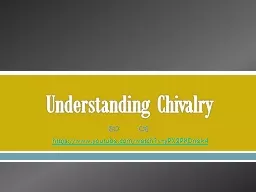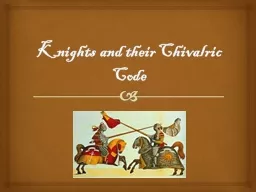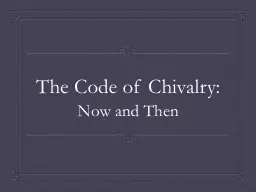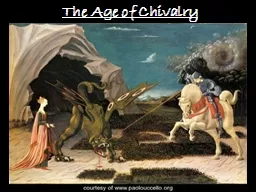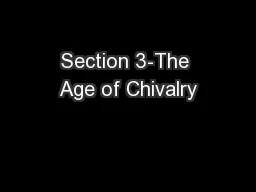PPT-13.3 The Age of Chivalry
Author : giovanna-bartolotta | Published Date : 2016-05-18
Knights Warriors on Horseback The Technology of Warfare Changes Leather saddle and stirrups enable knights to handle heavy weapons Armour Chainmail Plate Armour
Presentation Embed Code
Download Presentation
Download Presentation The PPT/PDF document "13.3 The Age of Chivalry" is the property of its rightful owner. Permission is granted to download and print the materials on this website for personal, non-commercial use only, and to display it on your personal computer provided you do not modify the materials and that you retain all copyright notices contained in the materials. By downloading content from our website, you accept the terms of this agreement.
13.3 The Age of Chivalry: Transcript
Download Rules Of Document
"13.3 The Age of Chivalry"The content belongs to its owner. You may download and print it for personal use, without modification, and keep all copyright notices. By downloading, you agree to these terms.
Related Documents


